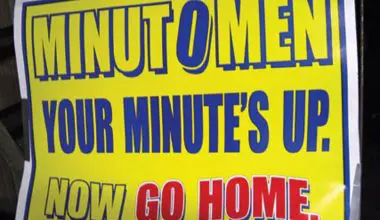IF you ever think you have it rough as a police officer, let me put some things in perspective. Imagine you’re a police officer chasing two guys in a stolen car. After a lengthy and dangerous pursuit where the bad guys endanger many innocent people, they finally crash and bail.
Being a good street cop, you jump out and give chase. You capture one bad guy while the other continues to flee. Being rather innovative, you handcuff the first bad guy to a metal railing and subsequently pursue and apprehend the second suspect. On the LAPD, you might receive a commendation for this. In fact, you might receive a number of commendations. You were resourceful, proactive and somewhat ingenious.
But in a country in Europe, this was not the case. An officer who pursued and single-handedly apprehended two dangerous criminals was thrown in jail for months while the judge decided whether or not he would press charges.
In some European countries, a judge or magistrate can arrest and incarcerate a police officer while he decides the officer’s fate as regards the judiciousness of an officer’s actions. In some European countries, uniformed officers are not allowed to carry or wear firearms. This policy stems from a rather unique political set-up. If the mayor or city council members don’t like guns, nobody gets them—including the police.
I asked an officer who was subjected to this policy what he does if a bad guy has a gun. He pointedly said, “We keep an eye on him as best we can and call for the national police, who do have guns.”
Being a curious sort, I asked what if the response time were somewhat substantial in nature? He responded, “We just wait longer.”
“What if the bad guy shoots at you?”
“We try not to get shot,” he answered.
At ITTS, we trained one European department whose officers are required at the end of their shift to place their revolvers in a long rectangular steel sleeve set into a concrete reinforced wall about three feet thick. A mysterious hand would suddenly emerge from the other side of the wall, retrieve the revolver, and ostensibly store it until it is needed again. Apparently a revolver is considered a device just shy of nuclear capability!
The officer whom I spoke with on this department had been shot, stabbed and run over by individuals he had previously arrested. Not being armed while off duty poses a slight risk for members of this department.
On other European departments, officers qualify once a year with just 20 rounds. That’s right—20 rounds to hone and perfect all the gunfighting skills they will ever need!
On some departments, officers transition from revolvers to semi-automatic pistols. When they had revolvers, they were allowed six rounds in the cylinder, which seems reasonable, but only six rounds to reload with when things got dicey—which is not reasonable.
When they transition to semi-autos, they are allowed to carry one round in the chamber and five rounds in the magazine, along with a spare magazine containing six rounds, even though both magazines have a 15-round capacity. Either these guys are really, really good and can resolve all problems with just 12 rounds or….
Their policy is misguided. It seems the city council does not wish its officers to have more than 12 rounds so that they do not shoot more than 12 bad guys.
Judges or magistrates in some countries demand to know why officers did not shoot the guns, knives or blunt-force objects out of the suspect’s hands as is done in Hollywood movies. In some jurisdictions, it is against policy to shoot at a human head. In fact, the officers are not allowed to shoot at the head of a silhouette target during training.
Some targets have circles on either shoulder or either side of the hips, which are the aiming points they are directed to target when engaging a suspect. These are nifty and neat-looking targets but a bit impractical. Essentially the use of firearms and deadly force is either discouraged or frowned upon when applied by police.
In some countries, the use of deadly force by an officer will become national news within the hour. There may be riots, protests, and mass demonstrations over a single shot fired by a police officer. In the U.S., the same shooting might barely be a blip on the radar.
When I question officers about some techniques or practices, I ask them why they do things in a certain manner. The answer: some of the techniques and methods are derived from movies and the Internet.
This is a rather staggering concept. Imagine basing a technique or philosophy on an action you saw portrayed by Tom Cruise in a movie!
I have trained a lot of actors through the years, and what is portrayed on the big screen is not necessarily practical— it is entertaining.
The next time you complain about your lot in life as a police officer in the U.S., consider the aforementioned points of fact. We get to carry guns, use bullets, and defend ourselves. The courts and citizens generally agree that this is part and parcel of the police officer’s job.
Police in other countries are just like most of us. They may speak a different language, eat different foods, and even carry full-length swords while on duty, but they are restricted by impositions that would be our worst nightmare.
They want to do the right thing, perform their functions, and be professional, but they are restricted by myopic policies and completely ridiculous mandates.





1 comment
Same is true in Hong Kong about turning their issue revolvers in @ end of shift. But they do get hollow point ammo at least.